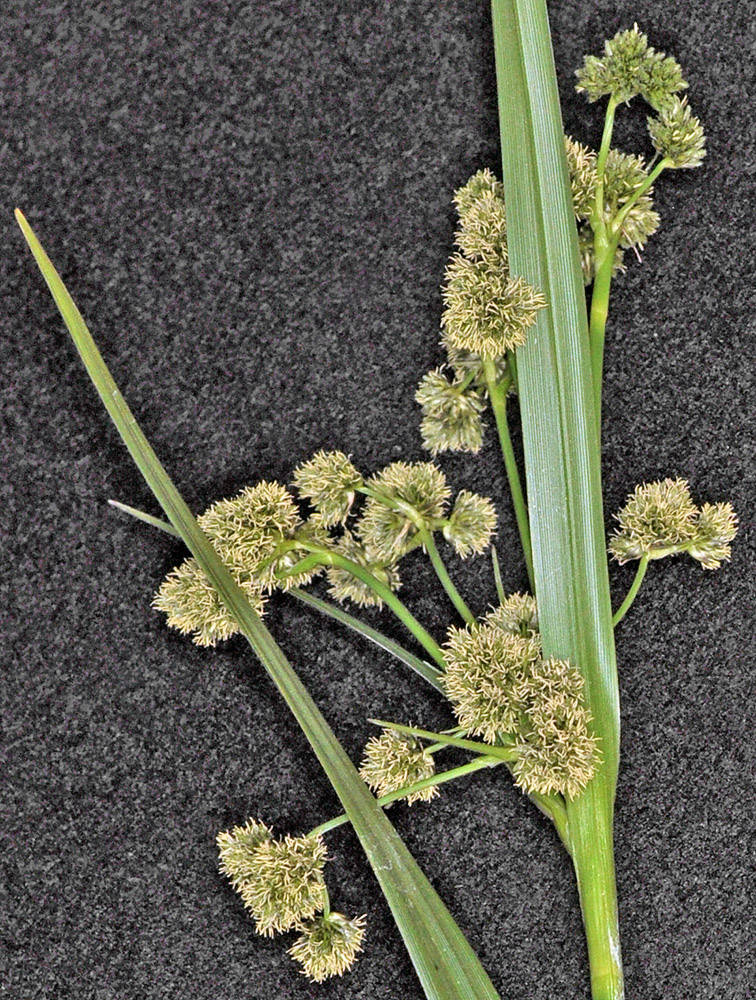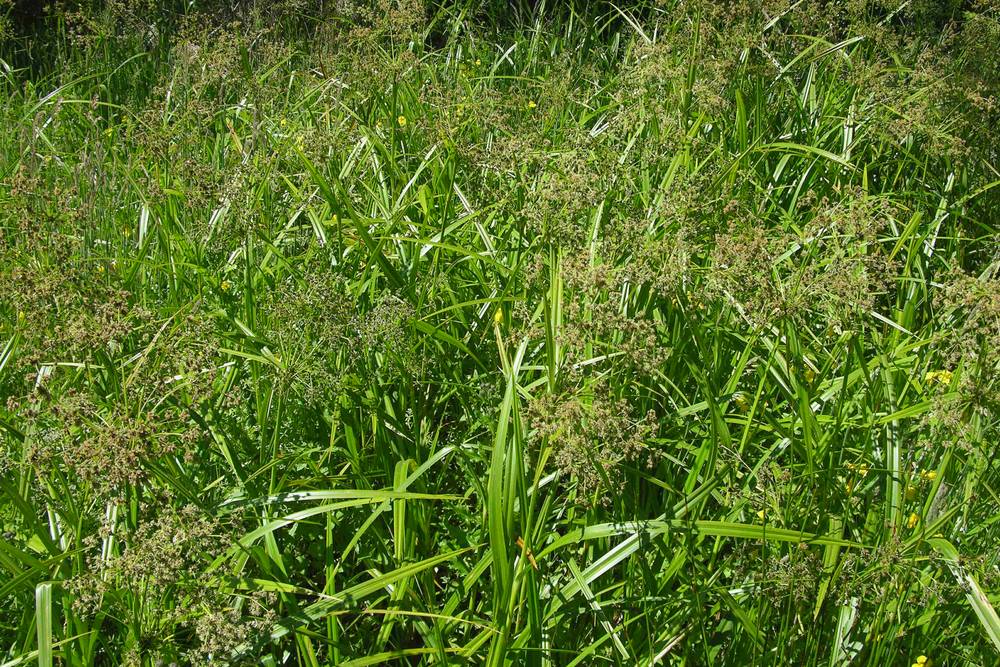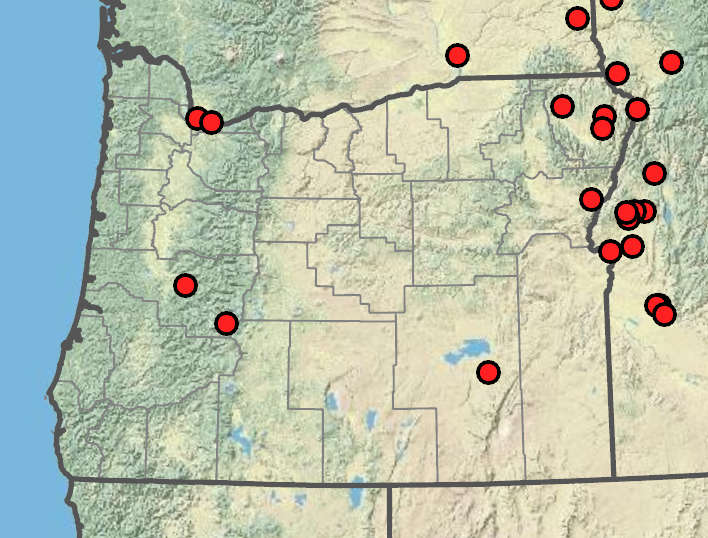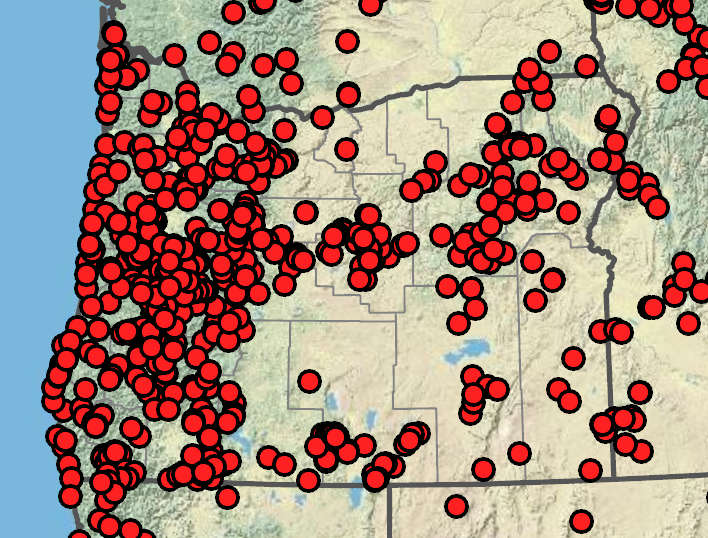Scirpus pallidus
Scirpus microcarpus
pale bulrush
small-fruited bulrush
20–55 cm × 8–16 mm.
23–60(75) cm × 5–15(20) mm.
terminal;
branches ascending and drooping.
terminal;
branches spreading and ascending.
aggregated in a few dense clusters of 12–130;
spikes sessile, narrowly ovoid, 4–5 × 1.8–2.3 mm; floral scales 1.6–2.8 mm; black or brownish black with pale midribs;
apex with awn 0.4–0.6(1.2) mm.
in dense clusters of (1)3–18 spikes, sessile; ovoid or narrowly ovoid, 2–8 × 1–3.5 mm; floral scales 1.1–3.4 mm, green or black;
apex rounded or acute to mucronate; mucro 0–0.2 mm.
perianth bristles persistent, 6; rather stout; straight or curved; longest bristles equaling achene, with retrorse teeth in distal 0.3–0.5, enclosed within floral scales;
stigmas 3.
perianth bristles persistent; (3)4(6) per flower; straight or curved; shorter than to 1.5 times as long as achene, retrorsely spinulose almost to base, enclosed within (occasionally weakly projecting from) floral scales;
stigmas 2(3).
plumply trigonous or plano-convex, 0.8–1.2 × 0.4–0.6 mm.
biconvex to plano-convex, 0.7–1.6 × 0.8–1 mm.
=56.
=64, 66.
Scirpus pallidus
Scirpus microcarpus
Marshes, streamsides, ditches. 0–700 m. BW. ID, WA; north to British Columbia, east to PA, southeast to TX. Native.
Scirpus pallidus is similar to introduced S. georgianus, which has reduced perianth bristles.
Marshes, ditches, wet meadows. 0–2100 m. All ecoregions except Col. CA, ID, NV, WA; north to AK, east to Newfoundland, KY, and DE, southeast to NM, south to Mexico; eastern Asia. Native.
Scirpus microcarpus is a common, widespread species. The broad leaves can be confused with Carex amplifolia if inflorescences are not found. Some botanists prefer to treat the plants from eastern North America as a distinct species, S. rubrotinctus, but the differences are small.
Barbara Wilson, Richard Brainerd, Nick Otting
Barbara Wilson, Richard Brainerd, Nick Otting
- Local floras:
BC,
OR,
WA
- Local Web sites:
Flora NW,
PNW Herbaria
WildflowerSearch
iNaturalist (observations)
USDA Plants Database
- LBJ Wildflower Center
- SEINet
- Plants of the World Online
- Encyclopedia of Life
- Wikipedia
- Google Image Search
- Local floras:
BC,
CA,
OR,
WA
- Local Web sites:
CalFlora,
CalPhotos,
Flora NW,
PNW Herbaria
WildflowerSearch
iNaturalist (observations)
USDA Plants Database
- LBJ Wildflower Center
- SEINet
- Plants of the World Online
- Encyclopedia of Life
- Wikipedia
- Google Image Search





